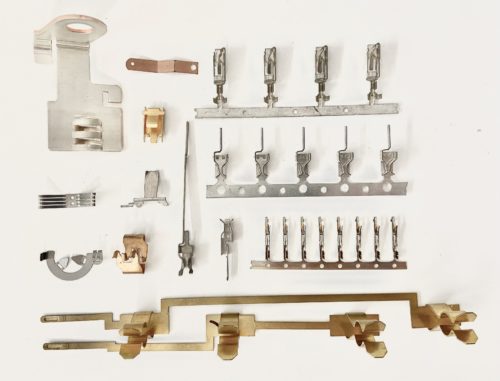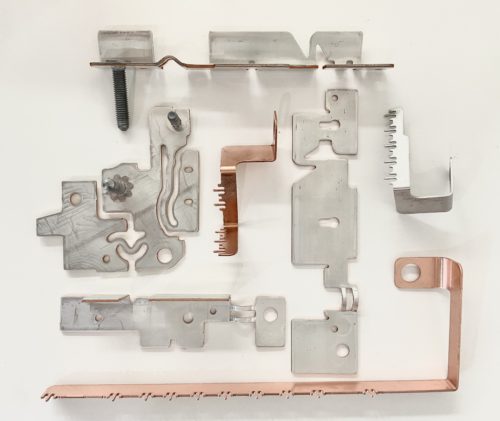Modern cars have a range of electrical connectors and terminals that control the internal system. This complex equipment controls and operates dozens of functions while providing critical real-time information to the driver. As the world makes the transition from ICE (Internal Combustion Engine) to electric-powered vehicles, the technology and components needed to support that transition will change as well. The main components of an ICE vehicle’s electrical system are the starter, battery, and alternator. The battery is a source of energy for the starter, while the alternator provides power to the car. With electric vehicles, there is no longer a need for a starter or alternator. The main battery provides enough power for the propulsion of the vehicle as well as the operation of all of the other components within the vehicle.
How Does Your Car’s Electrical System Work?
The primary function of a car’s electrical system is to generate and store energy while supplying electrical current to power the various car systems, including power windows, digital devices, electrical gauges, a central locking mechanism, and more. This system offers precision control and convenience of operations.
The electrical system is incorporated throughout the vehicle to ensure communication between all parts of the car with the help of a central computer. Power is distributed from the main battery through a PDU (Power Distribution Unit) to all of the other components within the vehicle.
Most electric car batteries operate between 300-800 volts which is substantially different from the traditional 12 volts from ICE vehicles. This system has very different requirements for components. Since the battery provides the power needed to propel the vehicle as well as operate all of the different functions and controls these cars have circuits with high amperage and bigger parts to efficiently bear the load without failure.
Vehicle Electrical System Precision Metal Stamped Parts
How does Keats play a role in the automotive electrical system? We produce precision metal stampings, wire forms and assemblies. We specialize in copper alloy parts which can be found in nearly every component within the vehicle electrical system. Some examples of the components which Keats supplies parts for are ECU (Electronic Control Unit), Power Steering Sensor, Internal and External lighting systems, Adaptive Suspension Sensor, Ignition Coil, Fuse Box and many more
Some of the main components of a car’s electrical system include the following:
Terminals
A terminal is a conductor attached to the end of a wire within the vehicle that easily connects the various electrical parts within your car. Nearly all of the terminals within a vehicle are produced using the progressive stamping process. Once produced they are crimped to the ends of wires and become part of a larger wire harness. These terminals are responsible for electrical conductivity by providing power to the vehicle’s systems along with mechanical and electrical resistance to withstand harmful elements. Therefore, the durability and high quality of the car terminal connectors are crucial.
Bus Bars
Bus bars are an amazing engineering feat that helps make complicated systems of power distribution simple, flexible, and more affordable. The battery bus bar is typically located inside the panel boards, busways, or switchgear and conducts an electrical current. This component enables the new electrical circuits to branch off at any place along the busway route, rather than branching off the primary supply at a single location. The car battery terminal bus bar connects high-voltage equipment with low-voltage devices within battery banks and high-voltage devices with electrical switchyards. There are also busbars located within the fuse box which play a key role in distributing electricity throughout the vehicle. Busbars are almost always made from copper. Keats specializes in the production of automotive bus bars using progressive die stamping and stage tooling in order to ensure the most stable and cost-effective production of these critical components.
Wire Harnesses
Wire harnesses are bundled wires and data circuits, but they are so much more than that. Think of a wire harness as the nervous system of the vehicle. Every switch, light bulb, sensor, assembly, regulator, gauge, or button needs to receive power from the wire harness and oftentimes provide a signal back to another component. As vehicles become more and more complex through the use of sensors, the need for more complex wire harnesses with more connection points becomes larger. At Keats, we specialize in developing the terminals that attach to the end of each and every wire in the harness and work directly with our customers to develop custom stamped terminals and connectors to meet the changing needs of the electric vehicle market.
Switches
The EV switches within the car’s electrical system shut off or switch the power supply off from a battery circuit system. These switches protect the car as well as those around it from accidental electrical shock. The most common or easily recognizable example of an automotive switch is the one used to raise and lower the windows. Switches provide high-performance safety due to their interlocking design, which prevents a false power supply. Keats supplies critical components that are used within these switches such as spring terminals.
Custom Solutions From Keats
A car’s electrical system needs quality parts to ensure its maximum, safe performance. Keats is a leading automotive parts manufacturer that provides a wide range of high-quality, durable custom car electrical system parts, including bus bars, connectors, car battery terminals, and more. We use state-of-the-art technology and our industry expertise to provide you with premium-quality electrical system car parts that deliver superior performance and give you maximum return.
We are certified to IATF:16949, ISO:9001 & ISO:14001 so you can rest assured that we have the experience and the quality system necessary to meet the changing needs of today’s automotive electrical system market.
Get in touch with us now to request a free quote!



